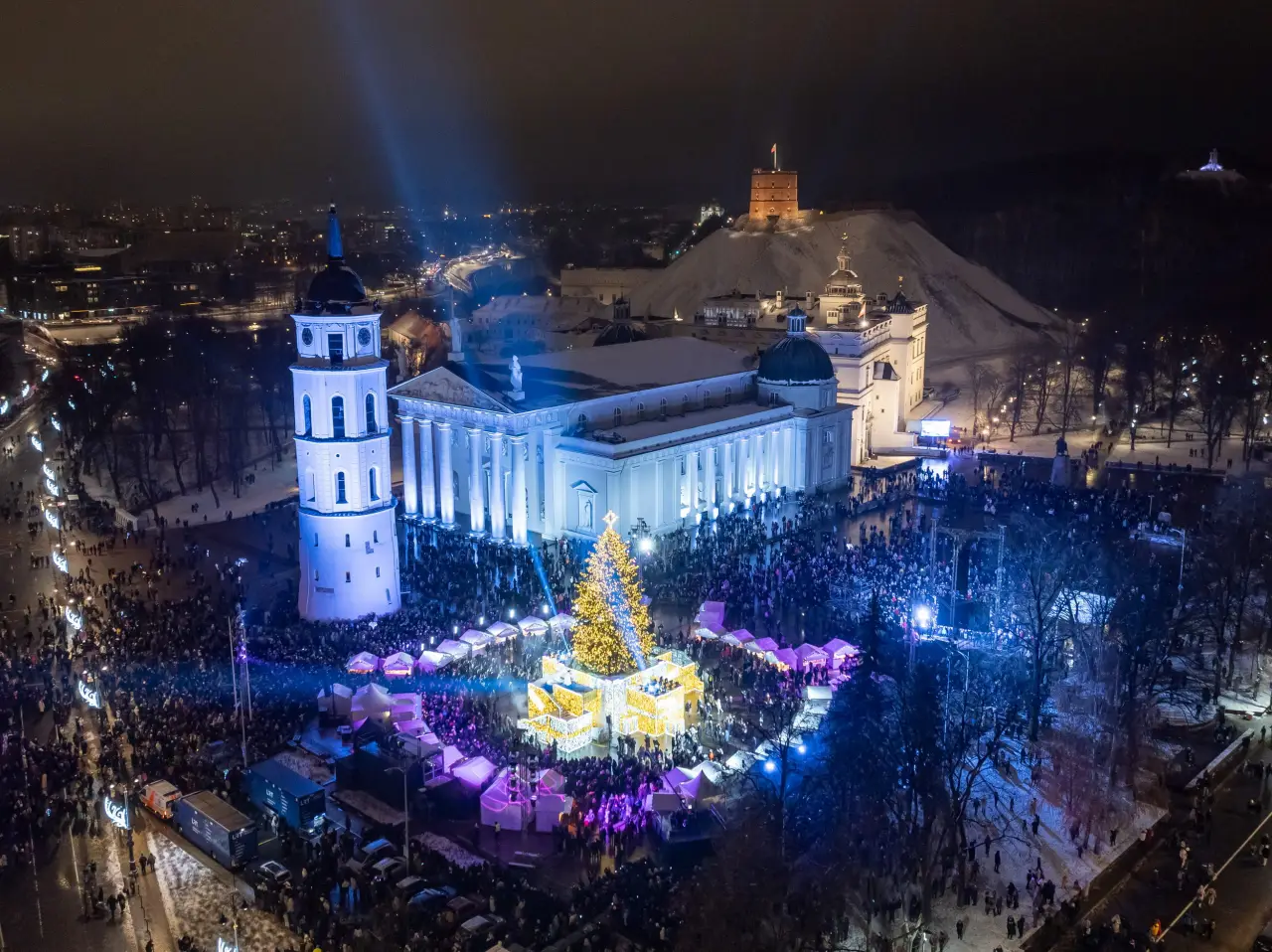Archaeological research on the premises of the Great Synagogue of Vilna complex, once one of the most important centres of Jewish religion and culture in the region, delighted the historians with significant findings. While excavating the premises of the Synagogue in Vilnius Old Town, archaeologists have unveiled two out of four pillars that were surrounding the pulpit (the Bimah).
“The discovery of the pillars is a great moment for us because we have found one of the two most sacred parts of the building. These pillars used to be 9 metres tall, and were located at a special place in the Synagogue – exactly where rabbis were standing during the service,” said Dr. Jon Seligman, the head of the research team. “The pillars were recognized by using the photos of the synagogue. Although we were hoping to find them, we experienced great joy when finally stumbling upon them”.
Apart from discovering the pillars, the researchers have unveiled writings carved into the walls situated next to Bimah, a cellar containing 300 coins, a Mikva (ritual pool), and 16th-century tiles. The writings refer to the Old Testament, with one of them being a citation from the Book of Genesis, while others are recounting various lines from religious hymns. The coins, on the other hand, vary in age: some of them date back to the 17th century, while others were made sometime around the Synagogue was destroyed.

The Great Synagogue of Vilna, before it was destroyed, was a centre of Jewish culture and religion on a European scale. Even though there are only remains of the Synagogue left today, it used to be the principal prayer home to the extensive Jewish community Vilnius once boasted. Due to a thriving Jewish community in the city, including Vilna Gaon and other prominent thought leaders, Vilnius, or Vilna in Hebrew, was known as “Jerusalem of the North.”
The Synagogue was built at the beginning of the 17th century to replace an older wooden synagogue. It soon became a central venue for the city’s Jewish community, and 12 Kloiz (small synagogues for study purposes), a community centre, and a bathhouse with ritual pools were built in the vicinity. The complex of these buildings had a separate name, the Shulhoyf.
The fast decay of the house of prayer built in the Renaissance-Baroque style started during WWII when it was severely damaged. During 1955-1957, the Soviet government razed the remains of the Great Synagogue and built a kindergarten on top of them in 1964.
Started in 2011, the archaeological research already bore fruit. In 2018, two Mikvas (ritual pools), together with a significant fragment of a wall, floor, and a part of Bimah were discovered by a team of international researchers, comprised of scientists from Israel, USA, and Lithuania. The goal of this year’s excavation is to find Aron Kodesh (an ark containing synagogue’s Torah scrolls).
The whole excavation project is lead by Dr. Jon Seligman, the Director of Israel Antiquities Authority, and Justinas Račas, a Lithuanian archaeologist from Kultūros Paveldo Išsaugojimo Pajėgos (Cultural Heritage Preservation Corps) organization. The archaeological research is funded by the Good Will Foundation. Project‘s partners include Lithuanian Jewish (Litvak) Community, Israel Antiquities Authority, and Vilnius city municipality.
There are plans by Vilnius city municipality to renovate the surroundings of the Great Vilna Synagogue once the research is complete. A project of Jewish street historic restoration is currently being finalized, while the municipality is also contributing by publicizing the findings of the Synagogue site research and organizing events and tours about the discoveries.
Photo Credit: Vilnius City Municipality















